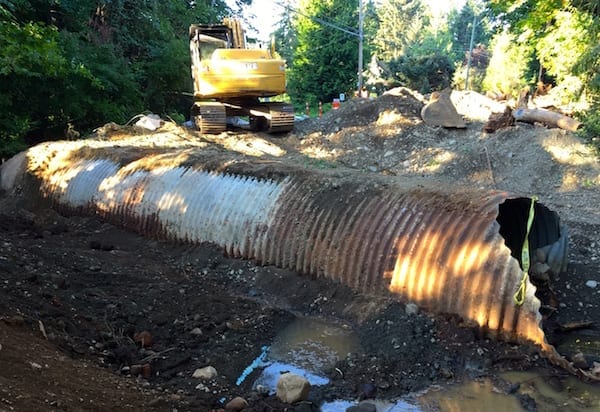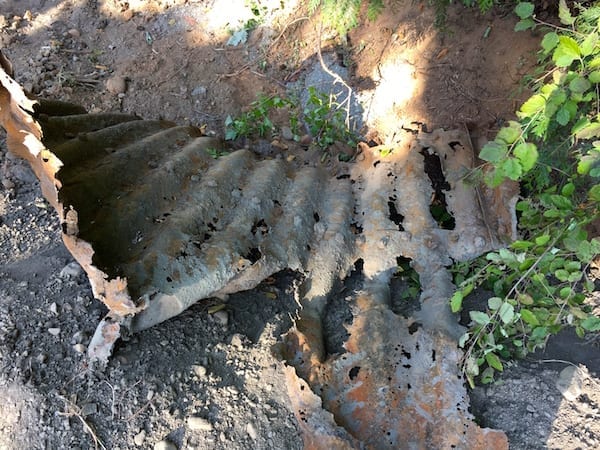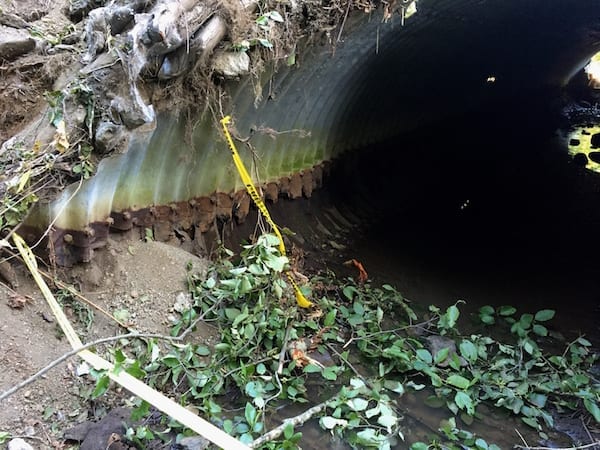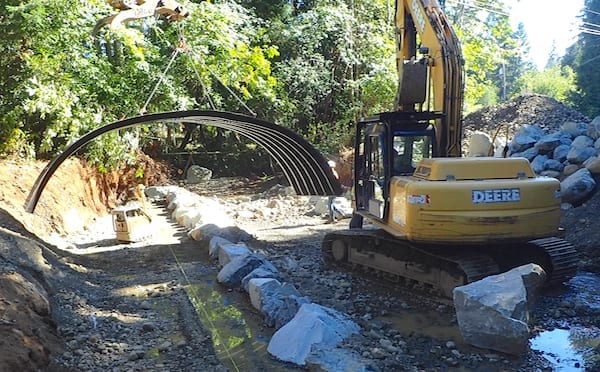An older galvanized steel pipe arch near Courtney, BC, was close to the end of its design service life and had badly deteriorated. The BC Ministry of Transportation and Infrastructure (MoTI) was looking for a longer-lasting replacement with improved fish passage dynamics for an ongoing stream rehab effort. They found all of that and more in AIL’s rather unique GRS Super•Cor Arch with Best-Kote Polymer Coating solution that had several benefits stacked in MoTI’s favour:
Geotextile Reinforced Soil (GRS) Technology
- Transfers load from arch to surrounding GRS mass
- Minimal cover depth
- Allows for wide range of backfill material
- No need for concrete spread footings
- Wider stream bed for increased hydraulic capacity and fish passage
- Less construction impact on fish habitat
Best-Kote Polymer Coating
- Extended service life of over 75 years
- Ideal for aggressive environmental conditions
- Excellent corrosion and abrasion resistance
GRS technology put the dirt to work
AIL’s GRS technology uses steel anchor rods to connect our structural plate arches and headwalls to the backfill/geotextile composite which results in more flexible structures that shed load into the surrounding backfill and subgrade.
Aggressive soil conditions called for polymer coating
The aggressive soil conditions were clearly evident in the deteriorated condition of the existing structure. Pre-design testing confirmed the stream water had relatively high resistivity (8200 ohm-cm), requiring consideration of a polymer coating.
The installation had to be completed during a fish window and before the increased traffic of a long weekend. AIL worked with the owner and the installation crews to coordinate the delivery with the construction start date. The products shipped from various AIL facilities to arrive right on time, ready to be installed when the crew arrived.
The crew was new to Super•Cor plate assembly and GRS construction. AIL staff were on-site during the plate assembly to provide start-up assistance. Our GRS crossing design partner, Terratech Consulting, was also on-site for much of the installation to provide field reviews.
Increased hydraulic capacity and improvement to fish passage
Unlike conventional open-bottom structures that are pinned to a rigid footing, GRS arches are installed on a scour-resistant, compacted gravel/boulder bed. The new crossing transformed the existing 2.4 m wide closed bottom pipe to a 6.6 m open-bottom natural stream bed. Had the same structure been installed with concrete spread footings (estimated width of 1.1 m), the channel width would have been reduced to 4.9 m.
This arch was installed with minimal cover (0.84 m) and was checked using finite element software. The cross-section of the structure was also monitored during and after construction, with minimal movement recorded.
In speaking with representatives from both MoTI and their consultant, they were happy with the product assembly process and the level of support from AIL. They hope to use this GRS solution in the future.
“At Roy Creek Royston Road, a closed-bottom culvert that was past its service life was replaced with an open-bottom fish-stream crossing with vegetated retaining walls, was cost-effective and straightforward to install with conventional construction equipment, sufficiently robust to withstand climate change impacts and provide over 75 years of service life. Related habitat restoration was done as part of this project and throughout the watershed by multi-partner collaborations as part of the rehabilitation of this salmon and trout stream, that began in 1981 by local community members. The new fish-friendly stream crossing is an important component to ensure BC’s wild fisheries are sustained and restored.”
– Sean Wong, Senior Biologist, BC MoTI
More about Geotextile Reinforced Soil Bridges »
More about Best-Kote Polymer Coating »
















